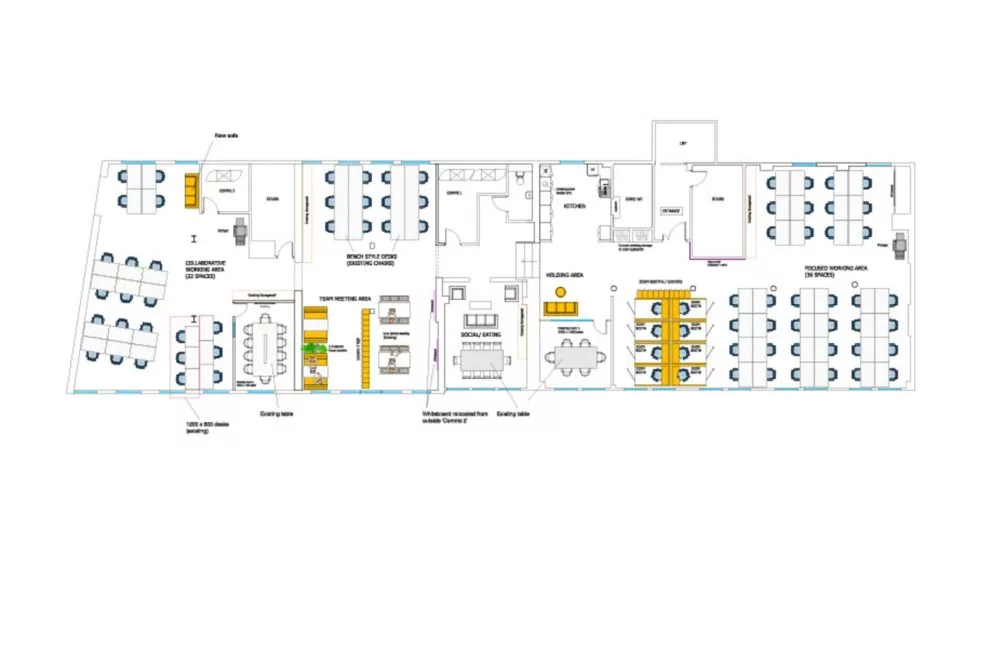 Add My Company
Add My Company

These days, people don’t just want more from their office spaces – they want more out of life. That means more time to spend with their families and friends, better health, and more disposable income.
Hence, the rise of hybrid working, where employees can split their time between the home and office. This results in a better work-life-balance, improved wellbeing, and for many, extra money due to less outgoings on transport fares.
Indeed, with so many benefits, it’s little wonder we’ve seen more companies embracing the hybrid office working model, and the stats suggest it’s here to stay:
- According to Total Jobs, the average UK employee spends £146 a month commuting, which equates to £135,871 over a lifetime. This is more for those commuting into London.
- 78% of employees cited improved work-life balance as an advantage of working from home.
- 52% of people who want to work remotely listed avoiding commuting as a top reason.
- As of June 2023, 29% of employees now work from home at least some of the time. This is an 4% increase compared to 2022.
With more employees working from home, it’s clear that businesses are adapting to these shifting demands. This has inevitably meant changes to their workplace designs, with adjustments needed to accommodate a different style of working.
If you’re doing the same, then this is the article for you. Here, we look at three hybrid office layout examples to inspire your own transformation. We also provide expert tips from our design team and give a rundown of our favourite hybrid furniture solutions.
Read on to learn more…
Devising a Hybrid Office Layout – Where do You Start?
When configuring a layout, you first need to consider the style of hybrid working you want to adopt. Here are three common ways businesses approach hybrid working:
- Fully Flexible Hybrid – The flexible hybrid working approach gives employees the freedom to choose when they come into the office. Companies who use this model often create an “agile” layout that accommodates a variety of working styles and tasks.
- Office First Hybrid – This is where employees are expected to work in the office most of the time, while occasionally working from home. This option is the closest to the traditional in-office model.
- Scheduled Hybrid – With the scheduled approach, businesses assign specific days to teams and individual employees for in-office work. This promotes collaboration while still offering some flexibility for individuals.
Once you’ve decided on your approach, the next step is to devise a suitable layout. Usually, businesses seek the help of office interior designers, who bring space planning expertise to the table…
Space Planning for Hybrid Working Layouts
Office space planning involves arranging the layout in a way that complements a particular working style. During this process, office designers consider furniture arrangement, work zone integration, traffic patterns, and aesthetics.
When it comes to hybrid setups, collaboration is often at the heart of a good layout design. In fact, 46% of people say collaboration is easier to perform in the office, so it makes sense to optimise the space for team assignments.
Our designer, Aimee Beazleigh, elaborates:
“When devising a hybrid layout, it’s important to think about the benefits the office brings compared to the home. That’s why collaboration zones and casual meeting spaces are key.
“Being physically present enables a more natural flow of ideas and supports ad-hoc problem solving. It also helps to foster that sense of unity and maintain a strong team ethic.
“Additionally, furniture and technology play a key role in facilitating digital collaboration. This can impact the space plan if the business requires Zoom booths and well-connected meeting spaces.”
A Look at Successful Hybrid Layouts
Hybrid Office Layout – Example One
Here is a great example of a hybrid office layout that lends itself to the scheduled or fully flexible approach. It offers a variety of spaces for regular in-house collaboration and individual work.
Here are some key features:
- Team anchor points – As you can see to the left of the design, the office includes a collaboration area where teams can congregate. The desks provide ideal touch points for project discussions, brainstorming sessions, and general problem solving.
- Focused working area – For individuals who need to double down on a task, the space includes a focused working area. With bookable desk spaces, employees also have the flexibility to come into the office whenever they want.
- Meetings pods – These are great for impromptu group meetings, whether it be one-to-one or small teams. They can also double up as spaces for individuals who prefer working in a more secluded environment.
- Zoom zone – Facilities for Zoom chats are very important when it comes to hybrid working. With a choice of six acoustic Zoom booths, in-office employees can jump in with a laptop and easily connect with home workers or clients.
Like every efficient hybrid office layout, the key to this space is choice and versatility. In contrast to a more rigid design, employees can work in a way that best suits the task at hand.
For more information on Hybrid Office Layout Guide – with Floorplan Examples talk to Rap Interiors

